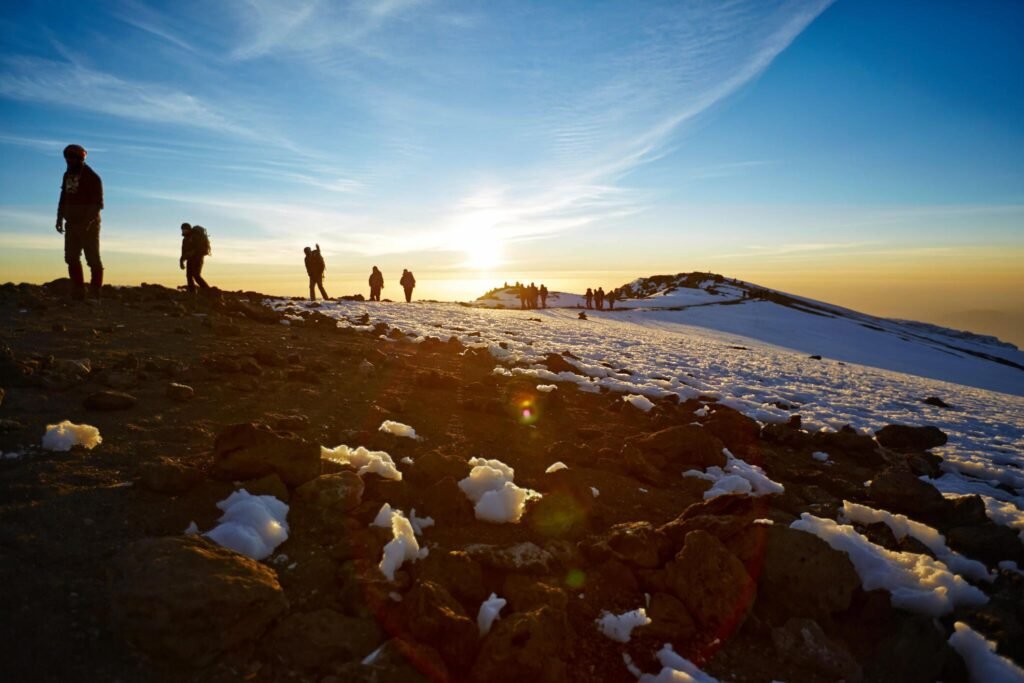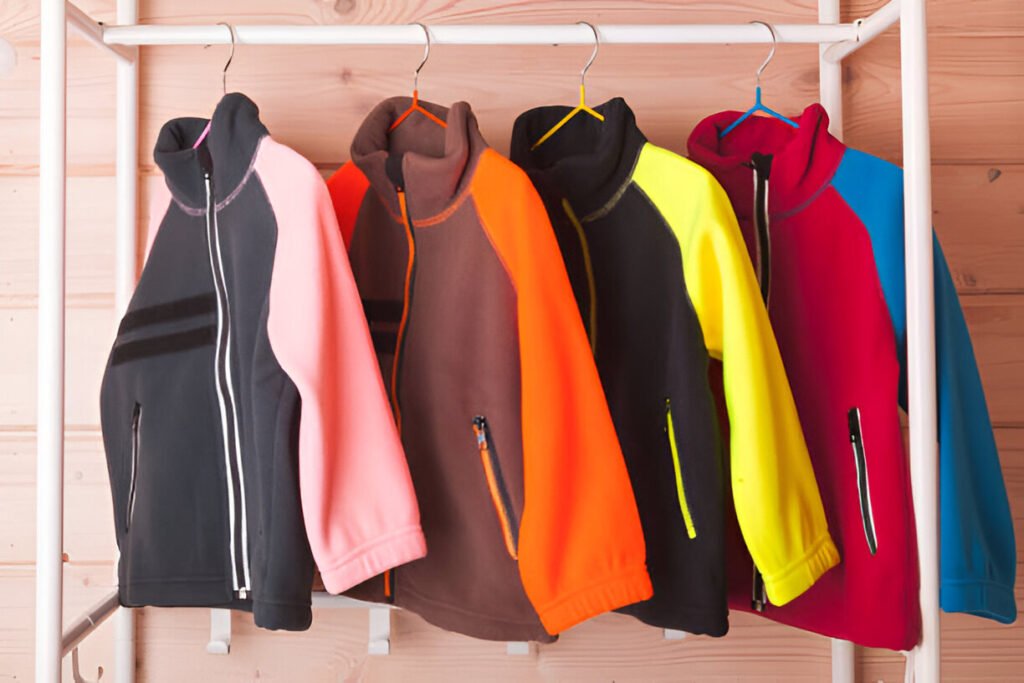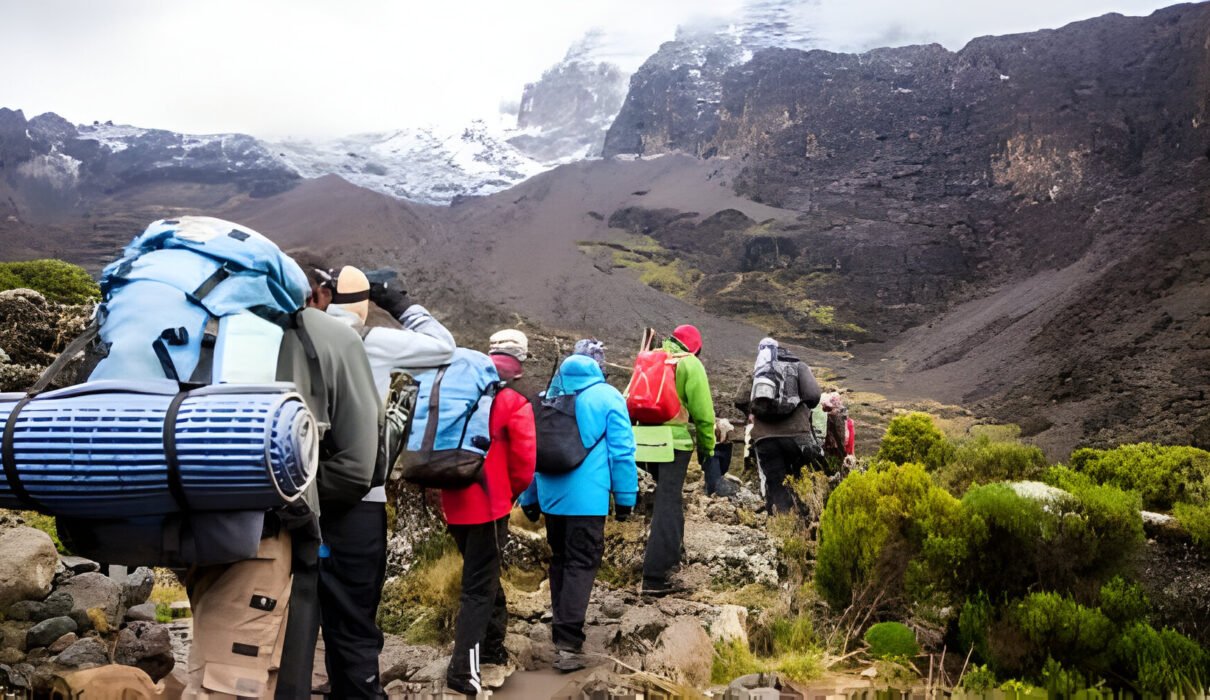What Should I Wear for Summit Night on Kilimanjaro ? : Summit night on Mount Kilimanjaro is one of the most challenging yet rewarding parts of the entire climb. As you ascend to Uhuru Peak in freezing temperatures and high winds, your clothing and gear play a crucial role in ensuring your safety and comfort. Knowing what to wear for summit night can make the difference between a successful ascent and an uncomfortable experience. In this guide, we’ll cover everything you need to know about how to dress and what gear to pack for the final push to the summit.
Learn more about Kilimanjaro climbs and gear recommendations.

What Should I Wear for Summit Night on Kilimanjaro ? : Importance of Layering for Summit Night
The key to staying warm on Kilimanjaro’s summit night is layering. Temperatures at the summit can drop as low as -20°C (-4°F), and proper layering helps trap body heat while allowing flexibility to remove layers if you start overheating during the climb. The general rule is to follow a three-layer system consisting of base, mid, and outer layers.
Layering System for Summit Night
- Base Layer: Moisture-wicking thermal underwear to keep sweat off your skin.
- Mid Layer: Insulating fleece or down jacket to retain warmth.
- Outer Layer: Waterproof and windproof shell jacket and pants to protect from wind and snow.
Read more about the importance of layering for high-altitude climbs.

What Should I Wear for Summit Night on Kilimanjaro ? : The Essential Base Layer: Stay Dry and Comfortable
The base layer is the foundation of your summit night outfit. It helps regulate body temperature by wicking moisture away from your skin, keeping you dry and preventing chills. For this layer, choose synthetic fabrics or merino wool, which are known for their breathability and quick-drying properties
Recommended Base Layer Materials
- Merino Wool: Soft, breathable, and naturally odor-resistant.
- Synthetic Fabrics: Quick-drying and effective at moisture management.
- Top Recommendation: Merino wool long-sleeve thermal tops and bottoms.
Find high-performance base layers for Kilimanjaro.
What Should I Wear for Summit Night on Kilimanjaro ? : Mid Layers for Warmth: Fleece or Down Jackets
The mid-layer provides insulation to keep your core warm. For summit night on Kilimanjaro, you’ll need fleece jackets or a down jacket. Fleece is a great option because it insulates while allowing moisture to escape, whereas down jackets offer superior warmth in extremely cold conditions.
Mid-Layer Options
- Fleece Jacket: Lightweight, breathable, and versatile.
- Down Jacket: Warmest option, especially important for extreme cold.
- Tip: Bring a high-quality down jacket to stay warm during breaks.
Explore top-rated down jackets for cold weather trekking.
What Should I Wear for Summit Night on Kilimanjaro ? : Outer Layer: Protection Against Wind and Snow
Your outer layer is essential for protection against Kilimanjaro’s harsh summit weather. A waterproof and windproof shell jacket and pants are necessary to keep you dry and shield you from the strong winds that are common during the ascent.
Key Features for Outer Layers
- Waterproof: Ensures you stay dry in case of snow or rain.
- Windproof: Blocks out the cold summit winds.
- Breathability: Allows moisture to escape without letting cold air in.
- Top Pick: Look for jackets and pants with Gore-Tex material for maximum protection.
Find durable and reliable outer layers for high-altitude climbs.
What Should I Wear for Summit Night on Kilimanjaro ? : Headgear: Keep Your Head and Face Warm
As you lose a significant amount of body heat through your head, proper headgear is essential for summit night. A thermal beanie or balaclava will keep your head and face protected from the cold, while a neck gaiter or buff can shield your neck from icy winds.
Headgear Options
- Thermal Beanie: Insulates your head while fitting comfortably under your hood.
- Balaclava: Offers full face and neck coverage.
- Neck Gaiter: Versatile protection for your neck and lower face.
Explore top-rated thermal headgear for extreme cold.
Gloves: Insulated and Waterproof for Warm Hands
Keeping your hands warm during summit night is crucial, as frostbite can be a risk at high altitudes. You’ll need two pairs of gloves: a thinner inner glove for dexterity and an insulated, waterproof outer glove or mitten for warmth.
Glove System
- Inner Gloves: Thin, moisture-wicking gloves for wearing under the outer gloves.
- Outer Gloves/Mittens: Insulated and waterproof gloves or mittens to protect against the cold and wind.
- Tip: Mittens provide better insulation than gloves, as they allow your fingers to share warmth.
Find the best gloves for Kilimanjaro trekking.
Footwear: Insulated Boots and Warm Socks
For summit night, your feet need to stay warm and dry, especially as temperatures drop below freezing. Insulated trekking boots are a must, as well as thick, moisture-wicking socks made of wool or synthetic materials.
Recommended Footwear
- Insulated Boots: Make sure your boots are well-insulated, waterproof, and broken in before the climb.
- Socks: Layer a thin liner sock under thick, wool trekking socks for added warmth.
- Pro Tip: Bring a spare pair of socks for summit night to ensure dry feet.
Discover the best trekking boots and socks for cold weather.
Gaiters for Extra Protection
To prevent snow and debris from getting into your boots, gaiters are an important addition to your summit night gear. They cover the tops of your boots and extend up your legs, ensuring your feet stay dry and comfortable.
Why Gaiters Are Essential
- Snow Protection: Keeps snow, ice, and moisture out of your boots.
- Wind Resistance: Adds an extra layer of warmth and protection from wind.
- Tip: Choose waterproof and durable gaiters that fit snugly over your boots.
Shop for high-quality gaiters for mountaineering.
Accessories: Headlamp, Sunglasses, and Sunscreen
Summit night typically begins around midnight, so a headlamp is essential for navigating in the dark. As you ascend into daylight, sunglasses will protect your eyes from the bright sun reflecting off the snow. Even in cold temperatures, you can get sunburned, so sunscreen and lip balm are necessary to protect your skin.
Must-Have Accessories
- Headlamp: Ensure you have a high-lumen headlamp with fresh batteries.
- Sunglasses: Polarized lenses to reduce glare from the snow.
- Sunscreen and Lip Balm: High SPF to protect against UV rays at high altitude.
Get the best headlamps and accessories for summit night.
Hydration and Snacks: Stay Energized
It’s easy to forget about hydration and nutrition in the cold, but staying hydrated and keeping your energy up is critical during summit night. Carry an insulated water bottle to prevent your water from freezing, and pack energy bars or gels to maintain your stamina during the long ascent.
Hydration Tips
- Insulated Bottles: Keep your water from freezing with an insulated cover.
- Hydration Packs: If using a hydration pack, ensure the tube is insulated to prevent freezing.
Find the best hydration gear for high-altitude climbs.
What Should I Wear for Summit Night on Kilimanjaro ? : Conclusion
Wearing the right gear for summit night on Kilimanjaro is essential for a successful and comfortable ascent. By layering your clothing properly and investing in high-quality, insulated gear, you can tackle the cold and windy conditions with confidence. Don’t forget to pack the necessary accessories, such as gloves, headgear, and an insulated water bottle, to ensure a smooth and enjoyable climb to the Roof of Africa.
For more information on preparing for your Kilimanjaro summit, visit Kilimanjaro Climb Specialist or Eddy Tours & Safaris.

